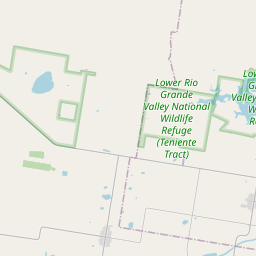First Baptist Church of Raymondville
Historical marker location:






This congregation traces its history to 1907, when services were held in a two-story home on 7th Street shared with other denominations. The First Baptist Church was officially organized in 1914. The members built a wooden structure on this site, and the Rev. S. F. Baucum and the Rev. E. L. Phipps were appointed ministers. The Sunday School was organized in 1921; Training Union and the Woman's Missionary Union were begun in 1922.
Missionary programs were a focus for the First Baptist Church congregation, which established missions in 1927, 1936, and 1938 to serve area Hispanic and African American citizens.
A ground breaking ceremony for a new sanctuary was held in 1944, and the first worship service was hald in the new facility on May 15, 1949.
In 1953, First Baptist Church members established a mission which became the Wood Avenue Baptist Church; it later merged with the founding congregation. A Sunday morning radio ministry was begun on November 13, 1959. Throughout its history, the First Baptist Church of Raymondville has served the community with a variety of worship, educational, and outreach programs. (1992)
As one of the most visible programs of the Texas Historical Commission (THC), historical markers commemorate diverse topics in Texas history, including: the history and architecture of houses, commercial and public buildings, religious congregations, and military sites; events that changed the course of local and state history; and individuals who have made lasting contributions to the state, community organizations, and businesses.
The Johnson Space Center, located in Houston, played a crucial role in the development of the U.S. space program. It was here that NASA trained its astronauts and mission control teams, and it continues to be an important center for space research and exploration today.
The area was primarily inhabited by indigenous people for centuries before European colonizers arrived in the 18th century. The Spanish explorers and missionaries had a significant influence on the region, establishing several missions and ranchos. The impact of Spanish colonization can still be seen in the county's numerous Spanish place names.
During the 19th century, settlement began to increase with the arrival of European and American settlers. Agriculture, especially cotton farming, became the backbone of the county's economy. The development of railroads in the late 1800s further encouraged growth, as transportation became more accessible. The completion of the St. Louis, Brownsville and Mexico Railway in the early 1900s played a crucial role in connecting Willacy County to other parts of the state and the country, leading to further economic expansion.
In the mid-20th century, the county's economy underwent a major shift from agriculture to oil and gas production. The discovery of oil and the establishment of oil fields brought jobs and prosperity to the area. Alongside the oil industry, the county also became known for its livestock production and tourism, with its proximity to the Gulf of Mexico making it a popular vacation destination. Today, Willacy County continues to evolve, with a diverse economy that includes agriculture, energy, tourism, and manufacturing.
Willacy County Timeline
This timeline provides a glimpse into the major events and milestones that have shaped the history of Willacy County, Texas.
- 1829: Mexican land grants are awarded in the area that is now Willacy County.
- 1836: Texas gains independence from Mexico.
- 1850s: Settlers begin to establish farms and ranches in the area.
- 1856: The community of Santa Monica is established.
- 1875: The town of Willacy is founded.
- 1881: The St. Louis, Brownsville and Mexico Railway reaches the area.
- 1911: Willacy County is officially formed from parts of Cameron and Hidalgo Counties.
- 1921: A hurricane devastates the area, causing significant damage and loss of life.
- 1930s: The region experiences an economic boom due to the discovery of oil and natural gas.
- 1962: The Raymondville Detention Center is established as the first privately operated immigration detention center in the United States.